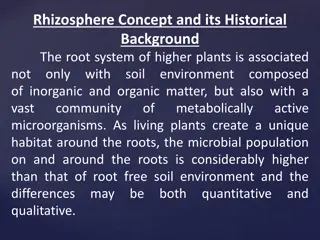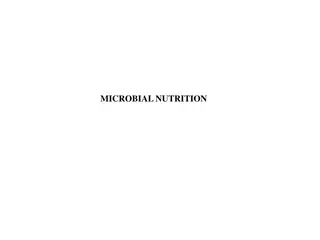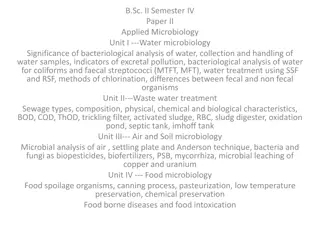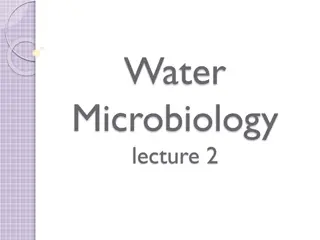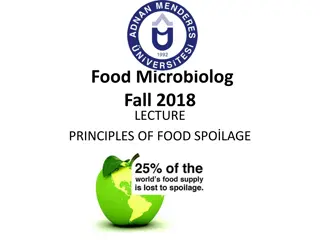Understanding Applied Microbiology: Insights into Microbial Diversity and Cell Organization
Applied Microbiology focuses on harnessing the capabilities of microorganisms for the production of beneficial products like medicines, vaccines, and biotechnological advancements. This field explores the intricate interactions between prokaryotic and eukaryotic organisms, emphasizing their pivotal roles in organic matter decomposition and nutrient cycling. The distinction in cellular organization and genetic repositories between bacteria, archaea, and eukaryotes further highlights the diverse applications of microbial science.
Download Presentation

Please find below an Image/Link to download the presentation.
The content on the website is provided AS IS for your information and personal use only. It may not be sold, licensed, or shared on other websites without obtaining consent from the author. Download presentation by click this link. If you encounter any issues during the download, it is possible that the publisher has removed the file from their server.
E N D
Presentation Transcript
Applied Microbiology BY DR/Reham A. El Fayoumy
What is Applied Microbiology Science? IS A branch of science deals with application of microorganisms in the field of science for the production of human beneficial products such as medicines, antibiotics, vaccines, enzymes, biotechnological products and also in food technology. engineered
Microbial Diversity PROKARYOTES AND EUKARYOTES Fungi and bacteria complement each other s abilities in degrading complex organic materials. Many fundamental processes in nature are the outcome of such interactions among microorganisms influencing the biosphere on a world wide scale. For example, bacteria and fungi play an indispensable role in the cycling of organic matter. By decomposing the organic by-products and the remains of plants and animals, they release nutrients that sustain the growth of all living things. Technology, too, takes advantage of the special abilities of mixed cultures of microorganisms, employing them in beverage, food, and dairy fermentations, for example, and in biotreatment processes for wastewater. Cellular organisms fall in to two classes that differ from each other in the fundamental internal organization of their cells
The nucleus(karyon), which in turn contains a set of chromosomes that serve as the major repositories of genetic information in the cell. cells of eukaryotes contain a true membrane-bounded Eukaryotic cells also contain other membrane-bounded organelles that possess genetic information, namely mitochondria and chloroplasts. In the prokaryotes, the chromosome (nucleoid) is a closed circular DNA molecule, which lies in the cytoplasm, is not surrounded by a nuclear membrane, and contains all of the information necessary for the reproduction of the cell. Prokaryotes also have membrane-bounded organelles whatsoever. Bacteria and archaea are prokaryotes, where as fungi are eukaryotes. no other Look to TABLE 1.1 A comparison of Bacterial, Archaeal, and Eukaryal cells
THE TWO GROUPS OF PROKARYOTES Bacteria and Archaea Why archaea can not be bacteria?? The evolutionary distance between the bacteria, the archaea, and the eukaryotes, estimated from the divergence in their ribosomal RNA (rRNA)sequences. the cell wall structure of bacteria is based on a cross-linked polymer called peptidoglycan with an N-acetylglucosamine N-acetylmuramic acid repeating unit. the presence of muramic acid is considered a bacterial signature. Archaea have a variety of cell wall polymers, but none of the incorporates muramic acid. The most dramatic difference between these organisms is in the nature of the glycerol lipids that make up the cytoplasmic membrane.
The hydrophobic moieties in the archaea are ether-linked and branched aliphatic chains, whereas those of bacteria and eukaryotes are ester- linked straight aliphatic chains All bacteria divided to gram + or but all archaea are gram- why?? possess a broader range of cell envelope structural formats than eubacteria and their cell walls do not contain peptidoglycan. ... All other archaea stained Gram- negative because their cell walls were so disrupted during staining that the crystal violet-platinum complex could not be retained by the cells. FIGURE 1.1 Repeating unit of the polysaccharide backbone of the peptidoglycan layer in the cell wall of bacteria. FIGURE 1.2 Membrane lipids of bacteria and eukaryotes are glycerol esters of straight-chain fatty acids such as palmitate. Archaeal membrane lipids are diethers or tetraethers in which the glycerol unit is linked by an ether link to phytanols, branched-chain hydrocarbons. Moreover, the configuration about the central carbon of the glycerol unit is Dinthe ester-linked lipids but L in the ether-linked lipids. R is phosphate or phosphate esters in phospholipids and sugars in glycolipids
Three Types of Archaea: the archaea were believed to be typical of extreme environments tolerated by few bacteria and fewer eukaryotes. The archaea include three distinct kinds of microorganisms, all found in extreme environments: the methanogens, the extreme halophiles, and the thermo acidophiles. The methanogens live only in oxygen-free environments and generate methane by the reduction of carbon dioxide. The halophiles require very high concentrations of salt to survive and are found in natural habitats such as the Great Salt Lake and the Dead Sea as well as in man-made salt evaporation ponds. the thermo acidophiles can be found in hot springs and solfataric environments, acidic (pH <4) within deep sea vents, or in other environments of geo thermal activity. They also occur in polluted environments, such as in acid mine drainage. Analyses of16SrDNA analyzed in environmental samples show archaea to be present in marine sediments, in coastal and open ocean waters, and in freshwater sediments and soils. An archaeal symbiont, Crenarchaeum symbiosum, lives in the tissues of the marine sponge Axinella mexicana in coastal waters of about 10 C. It now appears that bacteria and archaea have many types of habitats in common.
PRINCIPAL MODES OF METABOLISM All organisms need energy and reducing power in order to conduct the biosynthetic reactions required for growth. In all cases, the energy-generating processes produce ATP (a molecule with high phosphate group donor potential); nicotinamide adenine dinucleotides (NADH and NADPH) reducing power is stored in Organisms that use organic compounds as their major source of cell carbon are called heterotrophs those that use carbon dioxide as the major source are called autotrophs. Organisms that use chemical bond energy for the generation of adenosine triphosphate(ATP) are called chemotrophs. whereas those that use light energy for this purpose are called phototrophs According to this organisms divided to : Chemoautotroph or chemolitothroph in prokaryotic only, chemoheterotroph in prokaryotic and fungi plus animals, photoautotroph in pro and plants, photoheterotroph in pro only Those chemoautotrophs that obtain energy from the oxidation of inorganic compounds are also called chemolithotrophs.
Abstraction of Chemical Bond Energy from Preformed Organic Compounds(Chemoheterotrophy) Catabolic pathways are sequences of chemical reactions in which carbon compounds are degraded. The molecules are altered or broken into small fragments, usually by reactions involving the removal of electrons (that is, by oxidations). The enzymes that catalyse catabolic reactions are usually located in the cytoplasm. There are two classes of energy-producing catabolic pathways: fermentations and respirations. Fermentations are catabolic pathways that operate when no exogenous electron acceptor is present and in which the structures of carbon compounds are rearranged,there byr eleasing free energy,which is used to make ATP. Respirations are catabolic pathways by which organic compounds can be completely oxidized to carbon dioxide (mainly via the tricarboxylic acid cycle) because an exogenous terminal electron acceptor is present
Abstraction of Chemical Bond Energy from Inorganic Compounds (Chemolithotrophy or chemoautotroph) Certain prokaryotes use reduced inorganic compounds such as hydrogen(H2),Fe2+,ammonia(NH3),nitrite(NO2 ),sulfur, or hydrogen sulfide(H2S) as electron donors to specific electron transfer chains, commonly with O2 as terminal electron acceptor but in some instances with CO2 or sulfate, to generate ATP by oxidative phosphorylation.
Conversion of Light Energy to Chemical Energy(Phototrophy) Photosynthesis is performed within membrane-bound macromolecular complexes containing pigments (bacteriochlorophylls, chlorophylls, carotenoids, bilins) that absorb light energy. Some bacteria perform photosynthesis is only under an aerobic conditions. This is termed anoxygenic photosynthesis Different between photoautotroph and photoheterotroph? Why? is that photoautotroph is (biology) an organism, such as all green plants, that can synthesize its own food from inorganic material using light as a source of energy while photoheterotroph is a heterotrophic organism that uses light for energy but cannot use carbon dioxide as its sole carbon source and thus uses which need organic carbon, so they need the carbon produced by plants or other organisms for their nutrients.
THE IMPORTANCE OF THE IDENTIFICATION AND CLASSIFICATION OF MICROORGANISMS In traditional taxonomy, the shape of the bacterial cell, for example, has been used for dividing bacteria into large groups. Thus of the lactic acid bacteria (which, as we will see later, characteristically obtain energy by fermenting hexoses into lactic acid plus sometimes ethanol and carbondioxide), those with round cells and those with rod-shaped cells were placed in two completely different groups in the ninth edition of Bergey s Manual. More recent quantitative information on the phylogenetic relationships among organisms has become available through comparison of their DNA sequences. Because the prokaryote world is so diverse, however, this method is only useful for comparing species of bacteria that are very closely related. Otherwise, the DNA sequences will be so dissimilar that no data of significance will be obtained. Thus it was the use of rRNA sequences for comparison, pioneered by CarlWoese in the early1970.
rRNA is present and performs an identical function in every cellular organism, and more importantly, its sequence has changed extremely slowly during the course of evolution. It is therefore an ideal marker for comparing distantly related organisms. Characteristic sequences of nucleotides, or signature sequences, may be conserved for along time in a given branch of the phylogenetic tree and enable scientists to assign organisms on different branches with great confidence. Due to the vast time scale we are dealing with when we consider the evolution of bacteria.
Points for research: 1- INFORMATION CONTENT OF 16S rRna 2- LIMITATIONS OF 16S rRNA
PLASMIDS AND THE CLASSIFICATION OF BACTERIA The genetic information of abacterial cell is contained not only in the main chromosome but also in extra chromosomal DNA elements called plasmids. Plasmids are self-replicating within a cell, and many plasmids have a block of genes that enable them to move from one bacterial cell to another. Loss of its plasmids has no effect on the essential functions of a bacterial cell. plasmids are circular double stranded DNA molecules. Plasmid DNA often replicates at a different rate and sometimes on a different schedule from those of chromosomal DNA, and cells may contain multiple copies of specific plasmids. Some plasmids encode resistance to certain antibiotics or heavy metal ions or to ultraviolet radiation.
For example, the most characteristic trait of the fluorescent Pseudomonas) is thought to be its ability to degrade a wide range of organic compounds; however, many of the genes that make these degradations possible are located on plasmids.The same is true of the genes for nitrogen fixation in the species that carries out much of the biological nitrogen fixation on Earth Rhizobium and of the genes for disease-causing factors (toxins, proteases, orhemolysins;i.e.,the proteins that lyse red blood cells and other animal cells) in many pathogenic bacteria. Because plasmids sometimes confer highly noticeable phenotypic traits on their hosts, they may influence the classification of the host organism. For example, certain strains of Streptococcus lactis, classified as S.lactis subsp. diacetylactis, carry aplasmid that allows them to utilize citrate. These are the strains responsible for the characteristic aroma of cultured butter, which results from the diacetyl they produce when fermenting citrate in milk. Some plasmids have the ability to transfer themselves from one bacterial host cell into another. Sometimes the host is of a different species or genus.
On the other hand, the plasmid genes can become integrated into the host s chromosome and become a part of the permanently inherited genetic makeup of the cell. The ability of plasmids to replicate themselves has been utilized in the construction of cloning vectors, many of which contain a replication plasmids and can therefore be maintained indefinitely in the cytoplasm of the host bacteria function derived from
CULTURE COLLECTIONS AND THE PRESERVATION OF MICROORGANISMS No single preservation procedure is appropriate for all organisms. Instead, there are four basic methods that differ in cost and convenience. 1- The simplest procedure is to transfer cultures periodically to fresh solid slants of agar in the appropriate medium and to incubate the mat a suitable growth temperature. Once the slant cultures are well established, they are kept in a refrigerator at 5 C enclosed in a container to avoid desiccation. This is the least expensive procedure and keeps cells viable form any months, but there is a danger that mutants or contaminants may accumulate in such cultures. 2-Lyophilization (freeze-drying) is a particularly convenient preservation method. Microbial cells are mixed with a medium containing skim milk powder (at20%w/v) or sucrose (at12%w/v) and frozen, after which the water is removed from them by sublimation under partial vacuum. Lyophilized samples remain viable for many years and can be shipped without refrigeration.
3-Cells can be stored for prolonged periods of time at liquid nitrogen temperature. In this procedure, the cells are placed in ampules with media containing (by volume) either 10% glycerol or 5% dimethyl sulfoxide and are slowly frozen; their temperature is decreased by 1 C to 2 C per minute until it reaches about 50 C. The ampules are then stored at 156 C to 196 C in a liquid nitrogen refrigerator. Additives such as skim milk, sucrose, glycerol, and dimethyl sulfoxide minimize damage to the cells by preventing ice crystals from forming during the freezing process. 4- Many spore-forming bacteria and fungi can be preserved by slowly air drying the spores at ambient temperature on the surface of sterilized soil, silica gel, or glass beads.
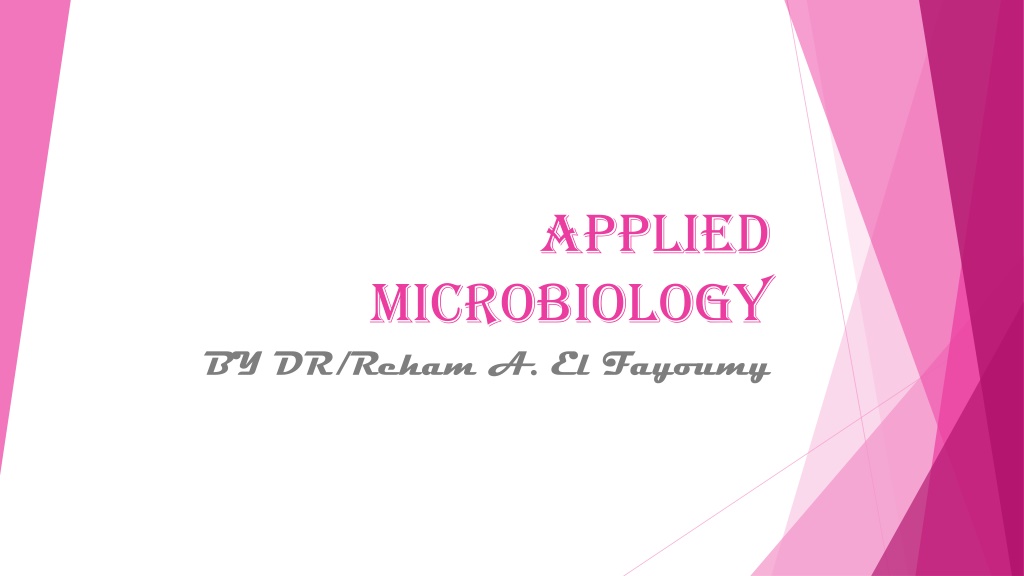
 undefined
undefined


